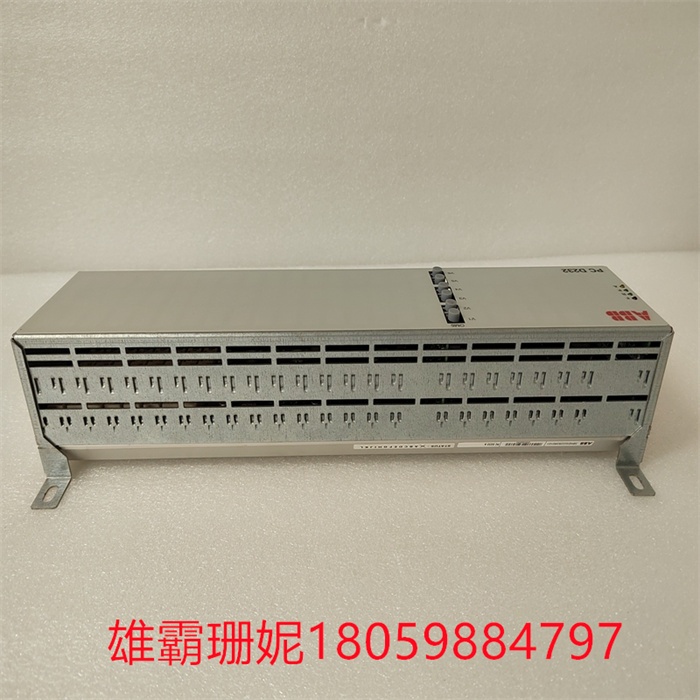ABB PCD232A,3BHE022293R0101 控制器模块
ABB PCD232A,3BHE022293R0101 控制器模块

ABB机器人创建信号及关联信号步骤车间ABB机器人较多,做改善或临时增加信号需要对机器人的信号进行配置,没有标准化流程,过程不清晰。1、创建信号之前先到要创建的模块里确认地址有没有被占用,创建组信号要查看组信号有没有包含在内的单个地址,创建单个信号要查看该信号有没有被别的组信号所包含。2、选择菜单,控制面板,配置系统参数,signal, 显示全部3、name:要创建的信号的名字;type of signal: 信号类型;assigned to device:要创建的信号 属于那个模块;device mapping:信号的地址。4、选择菜单,控制面板,配置系统参数,cross connection,显示全部5、name:要创建的关联信号的名称;resultant: 关联信号的结果;actor1:个条件;invert actor1:个条件是否取反;operator1:跟下 一个条件的关联关系;actor2:第二个条件; invert actor2:第二个条件是否取反;operator2:跟下一个条件的关联关系。总结:此类标准化作为新人学习ABB机器人信号创建及信号关联的一个入门级教程,对其有较好的指导作用。车间ABB机器人较多,做改善或临时增加信号需要对机器人的信号进行配置,没有标准化流程,过程不清晰。1、创建信号之前先到要创建的模块里确认地址有没有被占用,创建组信号要查看组信号有没有包含在内的单个地址,创建单个信号要查看该信号有没有被别的组信号所包含。2、选择菜单,控制面板,配置系统参数,signal, 显示全部3、name:要创建的信号的名字;type of signal: 信号类型;assigned to device:要创建的信号 属于那个模块;device mapping:信号的地址。4、选择菜单,控制面板,配置系统参数,cross connection,显示全部5、name:要创建的关联信号的名称;resultant: 关联信号的结果;actor1:个条件;invert actor1:个条件是否取反;operator1:跟下 一个条件的关联关系;actor2:第二个条件; invert actor2:第二个条件是否取反;operator2:跟下一个条件的关联关系。总结:此类标准化作为新人学习ABB机器人信号创建及信号关联的一个入门级教程,对其有较好的指导作用。
ABB PCD232A,3BHE022293R0101 控制器模块

系统服务器主要负责对域内系统数据的集中管理和监视,包括报警、日志、事故追忆等事件的捕捉和记录管理,并为域内其它各站的数据请求(包括实时数据、事件信息和历史记录)提供服务和为其它域的数据请求提供服务。运行系统以系统服务器为中心,完成所有功能。系统服务器还提供二次数据处理和历史数据管理和存档功能。
现场控制站是DCS系统实现数据采集和过程控制的重要站点,主要完成数据采集、工程单位变换、控制算法处理、输出控制、通过系统网络将数据和诊断结果传送到系统服务器等功能。现场控制站由主控单元、智能I/O单元、电源单元和专用机柜四部分组成,在主控单元和智能I/O单元上,分别固化了实时控制软件和I/O单元运行软件。现场控制站内部采用了分布式的结构,与系统网络相连接的是现场控制站的主控单元,可冗余配置。主控单元通过控制网络(CNET)与各个智能I/O单元实现连接。
ABB PCD232A,3BHE022293R0101 控制器模块

Steps for ABB Robots to Create Signals and Related Signals There are many ABB robots in the workshop. To improve or temporarily increase signals, it is necessary to configure the signals of the robots. There is no standardized process and the process is unclear. 1. Before creating a signal, go to the module to be created to confirm whether the address is occupied. When creating a group signal, check whether there is a single address included in the group signal, and when creating a single signal, check whether the signal is included in other group signals. 2. Select menu, control panel, configure system parameter, signal, and display all 3. name: the name of the signal to be created; Type of signal: signal type; Assigned to device: which module the signal to be created belongs to; Device mapping: the address of the signal. 4. Select menu, control panel, configure system parameters, cross connection, and display all 5. name: the name of the associated signal to be created; Result: the result of correlation signal; Actor1: conditions; Invert actor1: whether the conditions are inverted; Operator1: Association with the next condition; Actor2: the second condition; Invert actor2: whether the second condition is inverted; Operator2: Association with the next condition. Conclusion: As an entry-level course for newcomers to learn ABB robot signal creation and signal correlation, this kind of standardization has a good guiding role. There are many ABB robots in the workshop. To improve or temporarily increase the signal, it is necessary to configure the signal of the robot. There is no standardized process and the process is unclear. 1. Before creating a signal, go to the module to be created to confirm whether the address is occupied. When creating a group signal, check whether there is a single address included in the group signal, and when creating a single signal, check whether the signal is included in other group signals. 2. Select menu, control panel, configure system parameter, signal, and display all 3. name: the name of the signal to be created; Type of signal: signal type; Assigned to device: which module the signal to be created belongs to; Device mapping: the address of the signal. 4. Select menu, control panel, configure system parameters, cross connection, and display all 5. name: the name of the associated signal to be created; Result: the result of correlation signal; Actor1: conditions; Invert actor1: whether the conditions are inverted; Operator1: Association with the next condition; Actor2: the second condition; Invert actor2: whether the second condition is inverted; Operator2: Association with the next condition. Conclusion: As an entry-level course for newcomers to learn ABB robot signal creation and signal correlation, this kind of standardization has a good guiding role.
The system server is mainly responsible for the centralized management and monitoring of system data in the domain, including the capture and record management of alarms, logs, accident memories and other events, and provides services for data requests of other stations in the domain (including real-time data, event information and historical records) and for data requests of other domains. The running system takes the system server as the center and completes all functions. The system server also provides secondary data processing and historical data management and archiving functions.
The field control station is an important station for DCS system to realize data acquisition and process control, which mainly completes the functions of data acquisition, engineering unit transformation, control algorithm processing, output control, and transmitting data and diagnosis results to the system server through the system network. The field control station consists of four parts: main control unit, intelligent I/O unit, power supply unit and special cabinet. On the main control unit and intelligent I/O unit, real-time control software and I/O unit running software are solidified respectively. The field control station adopts a distributed structure, and the main control unit of the field control station is connected with the system network, which can be configured redundantly. The main control unit is connected with each intelligent I/O unit through a control network (CNET).









